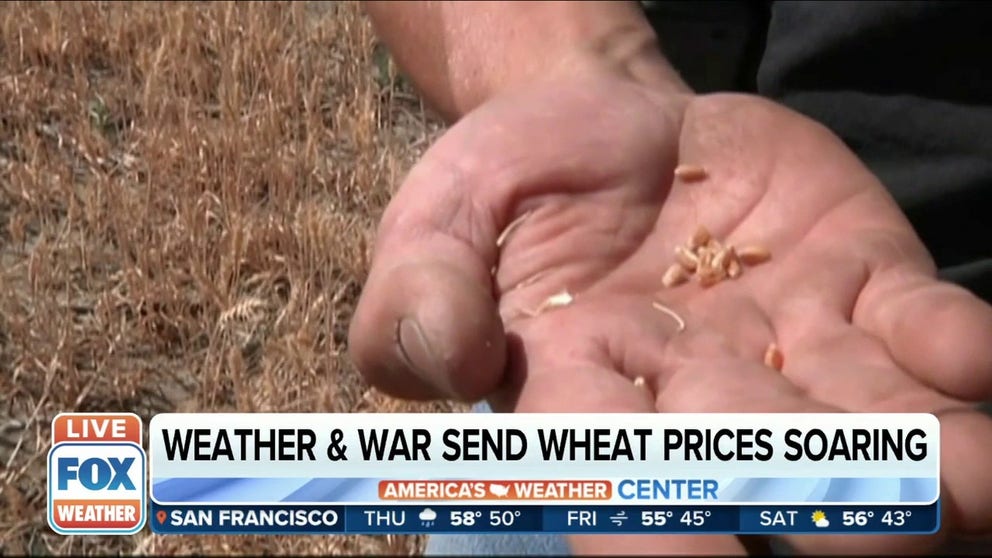Weather, Russia-Ukraine conflict leading to skyrocketing wheat prices
Ukraine, Russia and the United States are leaders in the wheat export industry
Wheat prices skyrocket amid Russia-Ukraine conflict
The ongoing conflict between Russia and Ukraine causes wheat prices to soar. The CEO for the National Association of Growers told FOX Weather that both countries make up together one third of the world’s wheat production.
A combination of a severe drought and conflict are causing a surge in wheat prices in the world’s breadbaskets that’s having a global impact on producers and consumers.
Wheat prices have been continuously hitting their highest levels in more than a decade, and experts predict the volatility will continue because of the concerns with some of the world’s largest growers, including the United States, Ukraine and Russia.
"The invasion by Russia into Ukraine is affecting wheat prices not only here domestically but globally," Chandler Goule, CEO for the National Association of Wheat Growers, told FOX Weather. "We were already looking at higher than usual prices here in the United States."
Goule said states that make up the wheat belt, including parts of the Pacific Northwest, Colorado, the Dakotas and Minnesota, have been dealing with a drought for several years and did not see substantial winter snows to cut into precipitation deficits.
"We are very dependent on snow and rain in the winter to keep moisture in the ground for our wheat production, and we also need to have enough moisture for spring wheat production," Goule said.

The majority of the area west of the Mississippi River is seeing some severity of drought.
(FOX Weather)
Many of those areas are reporting at least moderate drought levels that the National Drought Mitigation Center warns could lead to crop damage and developing water shortages.
CORN ETHANOL MAY BE WORSE FOR THE PLANET THAN GASOLINE, STUDY SAYS
"Ukraine and Russia together make up one-third of the world’s wheat production, which adds volatility and uncertainty to not only the production but the price of wheat," Goule said.
In addition to the conflict and climate, the National Association of Wheat Growers said the industry is dealing with inflation, tariffs and is still facing the impacts of COVID-19 supply chain issues.
The disturbances in wheat production and exports mean consumers could end up seeing higher prices on their favorite goods.
"Since February 20th, prices have increased around $2.50 a bushel, that’s a 33 percent increase. If you’re buying bread, that’s another dime or so," Dr. Kim Anderson, a crop marking specialist at Oklahoma State University, said.
Dr. Anderson cautioned that in addition to climate impacts, fertilizer and energy costs could lead to an increase in prices for not only wheat but also corn, soybeans and sunflowers.
"We are going into the planting time and those production times with a shortage of subsoil moisture, and it doesn’t look well," Dr. Kim Anderson said.
